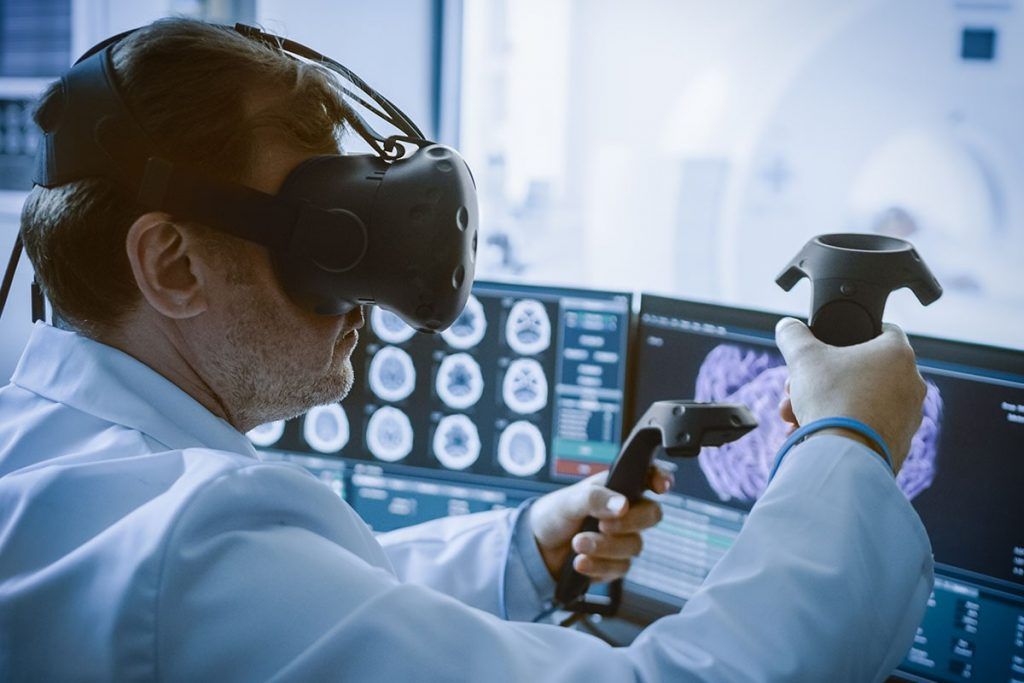Vicarious Surgical Inc. aims to build an affordable, single-port, intelligent surgical robot called the Vicarious Surgical System.
This robot would virtually transport surgeons inside the patient to perform minimally invasive interventions.
To do so, the company is combining advanced miniaturized robotics, computing and 3D visualization.
The company aims to increase the efficiency of surgical procedures, improve patient outcomes and reduce healthcare costs.
Led by a team of engineers from the Massachusetts Institute of Technology (MIT), the company plans to deliver the next generation of robot-assisted surgery, designed to address the shortcomings of today’s open surgery and robotic-assisted laparoscopic and minimally invasive surgery.
Surgical robot
Despite advances in manual and robotic-assisted minimally invasive surgery over the past 40 years, of the estimated 39 million annual interventions worldwide that can be addressed by the Vicarious surgical system, it is estimated that more than 50% are currently performed by open surgery and less than 5% by currently existing robotic-assisted minimally invasive surgery technologies.
The large incisions required for open surgery, while allowing the surgeon to see with his own eyes and operate with his own hands, create significant trauma for the patient, resulting in long hospitalization and recovery times, high hospital costs, as well as significant pain and suffering.
Due to the significant trauma to the patient associated with open surgery, 15-20% of these surgeries result in internal tissues or organs pushing through the muscle into the abdomen, or incisional hernias, caused by the operation, which require additional complex surgery to correct.
Challenges
Although there have been significant improvements in minimally invasive surgical procedures over open surgery, the following limitations associated with minimally invasive surgery remain, according to Vicarious Surgical:
First
Laparoscopic surgery offers improved patient outcomes, but presents significant challenges for surgeons, primarily associated with the use of long, rigid instruments through multiple incisions in the abdominal wall, which introduces the «fulcrum effect» that requires the surgeon to adjust the inversion and scale of the movements.
These laparoscopic instruments are difficult to manipulate, have limited degrees of freedom, limited reach, and reduced depth perception and visibility, requiring significant coordination among the surgical team to perform the procedure.
Second
Multiport robotic systems introduced in the early 2000s have successfully overcome some of the challenges associated with laparoscopy, but require multiple incisions.
Although wrist-based robotic instruments provide more dexterity than the long, rigid instruments used in laparoscopy, these robotic systems still require multiple systems and require the surgeon to define the workspace and kinematic motion profile of the robotic system for each intervention, depending on where he or she creates the incisions and where he or she intends to operate.
In addition, these systems are expensive and require a difficult learning curve for surgeons.
These systems are often underutilized because they take up a lot of space, have limited portability, and require extensive setup and longer OR turnaround time.
Third
More recently, single-port surgical robots have been developed, but these systems are limited in that they are based on legacy robotic architecture and therefore require a much larger incision than multiport robotic systems, have limited motion, force, and visualization, and can only operate in a small procedure area.
Given the relatively large trocar incision size that must be made by the surgeon to accommodate existing single-port robotic systems, among other limitations, these existing single-port robots have unfortunately resulted in significantly higher complication rates with higher levels of injury to the patient, with less capability for the surgeon.
![]()

